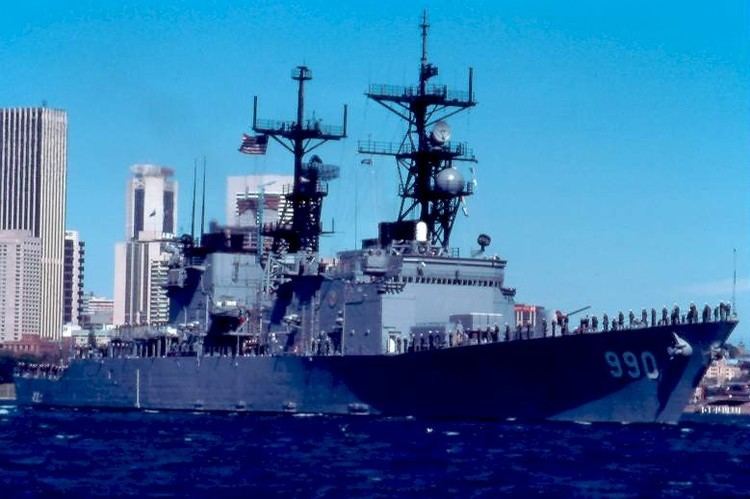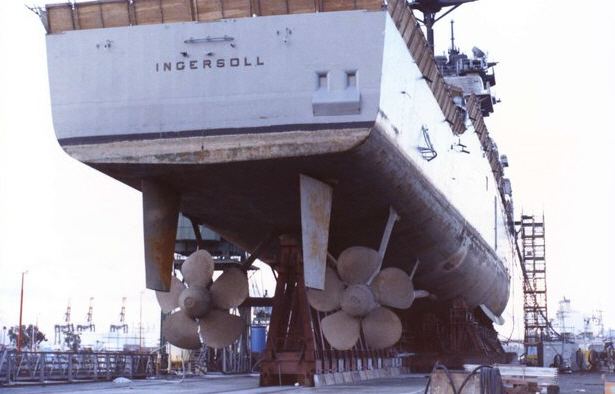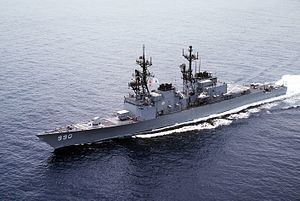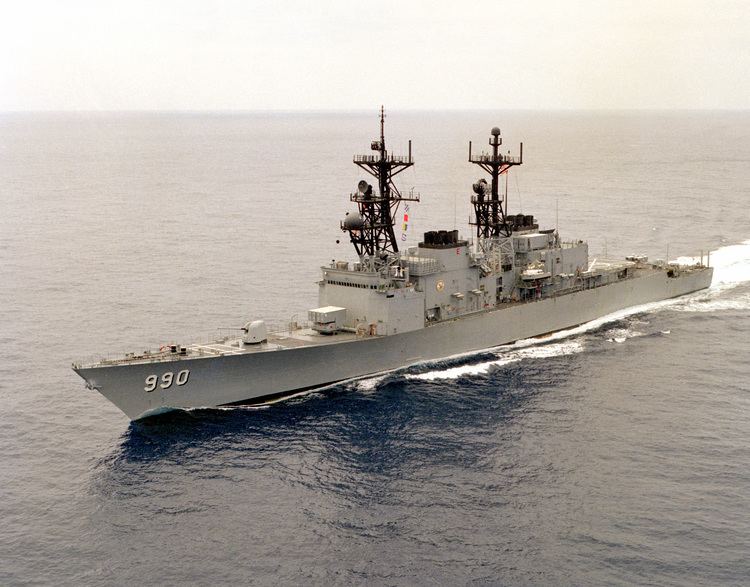Namesake Royal E. Ingersoll Laid down 5 December 1977 Commissioned 12 April 1980 Construction started 5 December 1977 Draft 8.84 m | Ordered 15 January 1975 Acquired 24 March 1980 Decommissioned 24 July 1998 Launched 10 March 1979 Beam 17 m | |
USS Ingersoll (DD-990), a Spruance-class destroyer, was the second U.S. Navy ship to be named USS Ingersoll; in this case, in honor of Admiral Royal E. Ingersoll (1883–1976), who served as CINC, Atlantic Fleet during most of World War II.
Contents
Ingersoll was laid down on 5 December 1977 by Ingalls Shipbuilding, Pascagoula, Miss.; launched on 10 March 1979; and commissioned on 12 April 1980, Commander E. R. Fickenscher III in command.

Ingersoll was first homeported in San Diego, CA, then Long Beach, CA (for overhaul) and then Pearl Harbor.
Ingersoll was one of the first US Navy ships to receive the Armored Box Launcher (ABL) version of the Tomahawk cruise missile system in 1985. This early variant of the missile system held up to four missiles in each of two canisters located directly forward of the pilothouse on the fore deck. Unfortunately, this system proved to be very heavy and affected the ship's seakeeping. The much more capable Vertical Launch missile system (VLS) quickly made the ABL obsolete.

Collision

On 20 June 1992 while transiting the Straights of Malacca, Ingersoll collided with M/V Matsumi Maru No. 7, a Pakistani oil tanker. Flooding was minimal and Ingersoll was able to reach port in Singapore. After temporary repairs, Ingersoll returned to Pearl Harbor where it completed repairs and began overhaul.
Fate

Though Ingersoll was one of the newest ships of the Spruance class, it was one of the earliest to be decommissioned. The cost to remove the ABL system and retrofit the VLS system likely contributed to the ship's early decommissioning. Ingersoll was decommissioned and stricken from the Navy list on 24 July 1998. She was sunk as a target on 29 July 2003.

